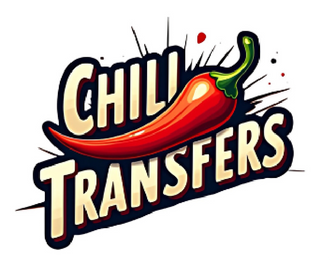🎨 HTV vs DTF: Which Printing Method Is Better?
When it comes to textile printing, one of the most common debates is HTV vs DTF. Both methods have their own advantages, and choosing the right one depends on your needs. From custom t-shirts to commercial apparel, the printing method you select will have a direct impact on cost, quality, and durability.
The discussion of HTV and DTF often comes down to versatility and long-term results. For small businesses, fashion brands, and print shops, knowing the difference is essential to making the right investment in equipment and design output.
🔍 What Is HTV and DTF (Heat Transfer Vinyl)?
HTV stands for Heat Transfer Vinyl, a method where designs are cut from colored vinyl sheets and then pressed onto fabric using heat. This method has been around for years and is still popular for sportswear, team numbers, and simple graphics.HTV and DTF
-
Advantages
-
Affordable for beginners
-
Great for simple text or numbers
-
No advanced printing equipment needed
-
-
Disadvantages
-
Time-consuming for large orders
-
Limited in multi-color or complex designs
-
Can peel or crack over time
-
HTV remains a go-to method for hobbyists and smaller projects but is increasingly being replaced by newer technologies for commercial use.
🌟 What Is DTF (Direct-to-Film) Printing?
DTF, or Direct-to-Film printing, is one of the most advanced technologies in the apparel industry today. In this process, the design is printed directly onto a special film. It is then coated with adhesive powder and heat-pressed onto the fabric. This method ensures vibrant, detailed, and long-lasting prints.
-
Advantages
-
Produces highly detailed, colorful designs
-
Works on cotton, polyester, blends, and more
-
Durable, flexible, and resistant to cracking
-
Perfect for both small and bulk orders
-
-
Disadvantages
-
Initial equipment costs may be higher
-
Requires proper maintenance
-
Thanks to professional providers like Chili Transfers, DTF has become accessible to both small and large businesses worldwide.
👕 Durability Comparison
Durability is a major factor when choosing a printing method. HTV prints are prone to peeling, fading, or cracking after multiple washes. On the other hand, DTF prints remain vibrant and intact for much longer. For apparel that needs to withstand frequent wear and washing, DTF clearly takes the lead.
💰 Cost Analysis
HTV is often cheaper to start with since it only requires vinyl sheets and a heat press. However, for large-scale production, it becomes inefficient and labor-intensive. DTF requires a higher upfront investment, but it pays off in bulk orders due to speed, flexibility, and lower per-unit costs.
🎨 Design Flexibility
HTV is best suited for simple, single-color shapes and lettering. However, when it comes to detailed artwork, gradients, or photo-quality designs, it struggles. DTF allows full-color, intricate designs with no limitations, making it the top choice for designers and fashion brands that want to stand out.
🌍 Environmental Impact
Sustainability is another growing concern. HTV often leads to material waste due to excess vinyl cutting. DTF, by contrast, reduces waste because the design is printed directly and applied more efficiently. This makes DTF a more eco-friendly solution in the long run.
📚 Learn More About Textile Printing
If you want to explore more about the history and technology of textile printing, you can visit Wikipedia – Textile Printing. This resource explains traditional and modern printing methods in great detail.
✅ Conclusion: Which One Should You Choose?
Ultimately, the choice depends on your goals. HTV is suitable for simple, low-volume projects and beginners. But for high-quality, detailed, and long-lasting results, DTF is the clear winner.
If you are a small business owner, custom apparel designer, or looking to scale production, working with a reliable DTF supplier will give you a significant advantage. Companies like Chili Transfers provide professional-grade DTF transfers that meet the highest standards of durability and design.
With DTF, your brand can deliver vibrant, long-lasting prints that stand out in the competitive apparel market.
